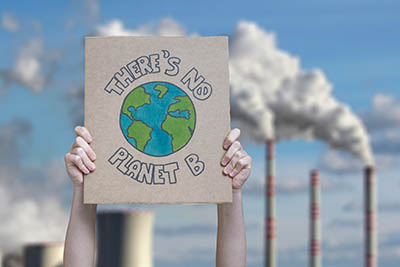
It snowed, finally. We’ve been waiting for months, restless and agitated. Have you ever seen your child settle more deeply into slumber after you tuck them under the blanket? That’s how it feels here. I live in the high-altitude desert of Northern New Mexico. Deserts often invoke images of Saharan sands, but this desert sprawls atop black, volcanic basalt. Perched at 7,000 feet, it snows here in the winter. Or, it used to.
Because of the human-wrought climate crisis, it rained on Christmas Eve.
This is a fierce and fragile region, rugged and imperiled all at once. Deserts endure an existence one step closer to death’s scythe than other regions. Their inhabitants are wily survivors. The toads wear dragon’s spines. The cacti guard their precious water with miniature swords. The junipers twist upon themselves, the size of small children despite being centuries old.
The Native Puebloan cultures and their ancestors have spent more than ten thousand years in this drought-prone region. They’ve never seen anything like this.
Usually, everyone in our desert town exalts at the start of rainfall. We lift our heads in praise and welcome the sweet touch of water. But when we woke to the shush of rain on Christmas Eve, an uneasy hush twinged inside us. This is not normal. This should be snow.
We know it’s too warm. All December, the neighbors have walked their dogs in shirtsleeves. We’ve crossed paths on the bare, dusty mesa and cracked jokes about keeping our tans. We laugh, but warily. Such warmth is unnatural. We can practically hear the plants gasping in distress. The tips of the apricot trees are flushing red in fever-dreams of spring. We’re all insomniacs of the season, stirring restlessly when we should be tucked in, sleeping.
From raising children, we know the importance of naps and sleep at regular intervals. We’ve seen the cranky toddler, the meltdowns, the screaming tantrums. Their whole bodies crave sleep. Unable to get it, they shudder in stress and strain. So it is with this desert ecosystem when December doesn’t fall below freezing, when the snows are nowhere to be found, or when the only precipitation falls as spits of rain, far and few between.
It’s our fault. Humans are responsible for this mess. The science is clear: the crisis is caused by our addiction to fossil fuels, overconsumption, excessive animal meat production, and pollution. The unseasonable warmth will continue unless we drastically change our way of life.
Last week, a young bull snake slithered out of its burrow, groggy and confused by the balmy weather. I halted in shock. These creatures hibernate when the autumn frosts give way to deeper freezes. I shouldn’t see this cold-blooded snake until April, heralding spring’s return. She shouldn’t even be able to move at this time of year. Our eyes met and I felt the full weight of my human responsibility. We are the ones who made this problem. We are the ones who must fix it.
This year, 2022, we must change, shedding the skin of our old existences as surely as a snake, shifting toward more respectful ways of living on this beloved and imperiled planet. Right now, my friends are writing New Year’s Resolutions. They’re turning the page on their calendars and examining their 2022 planners. We need to put climate action onto our schedule in 2022. We cannot wait another five years. We’ve already procrastinated for decades too long. This must be the year when systemic change ramps up. Our family, friends, banks, businesses, schools, shops – everyone and everything should be undergoing massive transformation.
Last year showed us a glimpse of the horrors that loom from doing nothing: tornadoes, hurricanes, catastrophic floods, heat domes, raging forest fires. And the dangers are not just in the shocking disasters. They also lurk in the eerie, uneasy times of unseasonable warmth that stress and strain our ecosystems. We can sense the subtle warning signs if we pay attention. It’s in the thirsty gasp of trees. It’s in the soul-piercing eyes of a groggy snake. It’s in the painful restlessness of a high-altitude desert that cannot sleep.
When the snow finally came, relief fell with it. We are all grateful for the blanket of winter that curls over the quiet sagebrush. For the trees, snakes, and toads, these are times of rest and dreaming. For humanity, these must be times of reckoning and change.
Rivera Sun, syndicated by PeaceVoice, has written numerous books, including The Dandelion Insurrection. She is the editor of Nonviolence News and a nationwide trainer in strategy for nonviolent campaigns.










